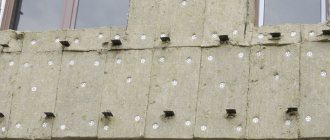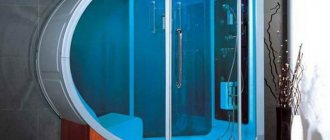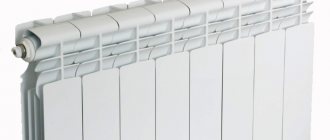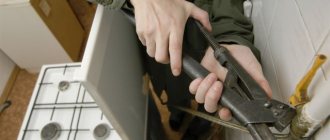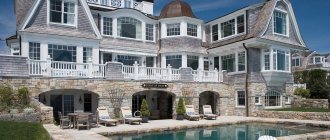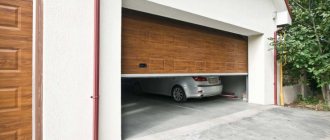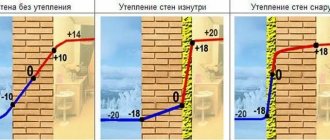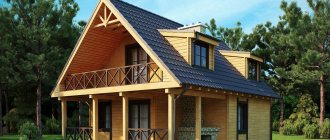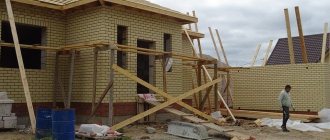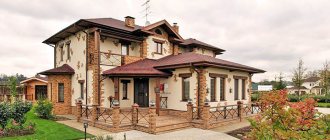Brick is perhaps the most popular building material. It is practical, versatile, reliable and durable, used for the construction of multi-storey buildings, country cottages, country houses, buildings for various purposes, outbuildings, fences. With its help, they lay the foundation, erect internal partitions, cladding facades and carry out other construction work. The market today is overflowing with varieties of this building material, so many are wondering which brick to choose. We will share with you recommendations that will help you make the right choice.
Types of bricks
Manufacturers produce different types of bars, which are made from clay, water, additives and other additives, and then dried and fired, giving them strength. But there are several types of rectangles that do not require clay to produce. This is hyper-pressed and silicate brick.
Materials used in construction have different purposes. Some bars are used for laying walls and partitions and are called masonry bars, while others are used to decorate the outer walls of a house. These products are called facing.
Ceramic rectangles and building bricks that do not contain clay can have a smooth, rough, or corrugated surface. Thanks to special additives, they can be given not only different colors, but also unusual patterns and designs. Common types of bars used in the construction and decoration of walls are:
- silicate;
- fireclay;
- hyper-pressed;
- ceramic;
- clinker;
- facing.
Each of them has its own set of characteristics, and also has advantages and disadvantages.
Sand-lime brick
This brick is considered the most affordable in price, because it does not require firing. The main component for its production is quartz sand (93%), the remaining 7% is lime. The material acquires density as a result of a chemical reaction in which lime is slaked. If nothing else is added to the mass, the product is white. Sand-lime brick is made in an autoclave, where the material is steamed at high temperature (200°C).
White bars are intended for both cladding and wall laying. But if you are going to use them to build housing, it is worth considering that they have high thermal conductivity. Since the product is resistant to temperatures above 200°C, stoves are not used from this brick. Silicate rectangles are not recommended for use in the construction of a basement floor, as they interact with groundwater and sulfur salts dissolved in them, which can lead to deterioration of the material.
White bars are well suited for building interior walls of a home. If you don’t know which brick is best to buy for cladding a house, take a closer look at the silicate product. It has high strength and density. To give the walls of your house an unusual look, you should choose a facing rectangle not with a smooth surface, but with an uneven or torn surface. This rusticated material, similar to wild stone, does not require additional plastering of the wall. They can decorate door and window openings.
Ceramic Hollow Red Brick
Hollow brick made of baked clay is cheaper than solid brick, because its production requires less material. Each block has holes and cavities. In construction, the advantage of such products is a lower load on the foundation of the house, low thermal conductivity and sound insulation, therefore they are often used as masonry elements of building walls.
If sawdust is added to hollow ceramic bricks during production, then when they burn during firing, they will leave behind small voids - pores. One bar of such porous material costs more than a hollow product, but is larger in size. Thus, a cubic meter of it can be purchased for the same price as a cubic meter of hollow rectangles. Porous bricks have better thermal conductivity than bricks with cavities. And thanks to their large sizes, they are convenient to lay out and can be quickly erected at home, saving on mortar.
Hyperpressed brick
This material is used in construction in the construction of foundations and basements, walls and fences. But more often it can be seen on the cladding of facades, columns, window and door openings. It is the most durable type of brick, because it is resistant to high and low temperatures and precipitation. No cracks form on it, and it will serve not only its owners, but also their distant descendants. You can build a house from hyper-pressed timber at any time of the year. The smooth surface of the product ensures high adhesion strength to the mortar and speeds up the masonry process.
Hyperpressed bricks consist of 86-92% crushed stone, limestone, marble, dolomite, facing stone waste or blast furnace slag. These durable products contain the best cement and coloring pigments. The formation of rectangles occurs under high pressure. As a result of hyper-pressing, all elements of the block are closely interlocked with each other, so the artificial brick acquires the moisture resistance, strength and frost resistance of the natural material (stone). This block has only two drawbacks: a large load on the support (foundation) and a high price.
Clinker brick
When producing clinker bars, refractory clay is fired at temperatures above 1000°C. As a result of this process, the brick is sintered and there are no voids left in it. The resulting monolith is highly durable and does not allow water to pass through. Due to its frost resistance, it can be used in the northern regions of the country.
The color palette of the material is all shades of yellow, red and brown. The surface of this type of brick is not only matte or smooth, but also glazed, and the shape is varied. Excellent external characteristics make it possible to widely use clinker products in cladding the facades of houses, and to construct chimneys, columns, and fences from them. Decorative walls are built from bars indoors; you can often see clinker bricks used as cladding for fireplaces and stoves.
The disadvantage of this material is the difficulty of laying it. If you incorrectly calculate the number of bars required for construction, then you risk purchasing missing products that will differ in color from the first batch. But the main disadvantage of clinker is its high cost (4 times more than porous blocks).
Fireclay brick
Fireclay brick is used in the laying of fireplaces, stoves and chimneys, for which it is also called stove material. It is made from chamotte powder and ground refractory clay. It has a grainy structure and sandy color. It has even greater strength than clinker and can withstand temperatures above 1500°C. The advantage of fireclay brick is its ability to accumulate heat well, which is why it is used in kiln construction. The downside is the high cost, but you won’t need a lot of bars for the stove.
Facing brick
Almost all of the types of building materials described above are used for cladding the facades of houses and interior decoration of rooms. If you don’t know what kind of brick to clad your house with, choose bricks of an unusual color or shape for your home, but at the same time take into account your financial capabilities.
Shaped and textured materials are produced for wall decoration. Shaped products have a complex shape and are used to decorate window openings and arches. They cover only parts of the house. Textured brick is more familiar to the eye and easier to use. This is a standard quadrangle that has a corrugated, smooth, matte, rusticated surface.
Solid brick
The product was the most common building material in Soviet times. Now it has been replaced by other types of rectangles, although some craftsmen prefer to use solid ceramic bricks to build a house. Red timber without holes has good frost resistance and strength, so it is used in the construction of a foundation or load-bearing structure.
A wall made of this material quickly transmits heat, so it should additionally be plastered or covered with facade tiles. A solid rectangle costs more than its hollow counterpart, since more clay is spent on its production.
How to make a brick with your own hands and is the result worth the effort?
Of course, if you are planning to build a cottage, then there is no point in making the entire required volume of bricks with your own hands. If we are talking about a relatively small quantity, for example, for the construction of an outbuilding or the base for a fence, then it is quite possible to try making bricks yourself.
The first problem that will need to be solved concerns where to obtain the required amount of clay. It’s good if there is a quarry near your site. If there is none nearby, you can find clay directly on your territory. Before you use it in making bricks, you need to do a little checking.
Take about 0.5 liters of dry clay into a container, dilute it with water until you get a kind of dough. Make a ball with a diameter of 4-5 cm and a flat cake with a diameter of 10 cm. Let them dry for 2-3 days. After this, evaluate the quality of the clay by examining the condition of the cake and throwing a ball from a height of 1 meter.
So: if there are cracks on the cake, it means the clay is too fat. You will need to add sand to it; if there are cracks on the cake and the ball is broken, it means the clay is “skinny”. You will need to add fattier clay to it; if there are no defects on the cake and the ball has not broken, then the clay is suitable for making bricks. If you did not get a satisfactory result the first time, continue experimenting with the composition of the mixture, being sure to remember the proportions used. .Making a template for molding bricks with your own hands is also quite simple.
It is enough to knock down a kind of lattice from the boards with cells 250x120x65 mm. How many cells will be in the mold depends on your wishes. The mold should have a bottom and a removable top lid. Drive cone-shaped pegs into the bottom and lid so that voids appear in the finished bricks.
To prevent the clay from sticking to the walls of the mold during the molding process, first sprinkle each cell with dry cement. The mold filled with clay must be thoroughly shaken so that the mixture is distributed evenly and fills the corners. The mold is covered with a lid and the brick blanks are left to pre-set.
After that, it is turned over and the bricks are removed. They should dry under a canopy, where they will not be afraid of direct sunlight and moisture. This process takes from 6 to 15 days. In this case, the bricks will shrink up to 15%.
In principle, the resulting “raw material” can already be used in construction, but if you definitely want to get classic baked brick, you will have to work harder.
You will need a metal barrel with a volume of up to 250 liters, a fire pit 40-50 cm deep, a sufficient supply of fuel and your patience to maintain the fire for 18-20 hours. The bricks are placed in a barrel in layers, leaving a small gap between adjacent stones. Cold air will not help you in this matter, so the improvised oven is covered with a metal sheet. When the firing process comes to an end, the fire is gradually reduced, and then the bricks are allowed to cool naturally right in the barrel, under the “lid.” If one of the cooled bricks is broken with a hammer, then the chip over its entire surface should have a uniform color and uniform structure. The quality of homemade bricks is also checked by immersing their fragments in water for several hours.
The color and structure should be uniform after this procedure. If you got the same results, then you managed to make a good brick with your own hands! Date: 02/03/2015 Views: 206 Comments: Rating: 48 Currently, the market offers a huge selection of building materials. Brick is considered the most common. Various types of bricks are used both in decoration and in the direct construction of the structure.
There are two main types for construction - red and white. They differ in structure and composition. In turn, each of these two types is divided into several more groups. All this is worth talking about in more detail. Types and purpose of bricks.
Selection of bricks for construction
Before purchasing a brick for building a house, you need to decide on the architectural style of the building, color scheme, and imagine how it will fit into the surrounding environment. The cost of products plays an important role for thrifty people, so they purchase cheaper materials. Those who are not used to counting money can afford the most beautiful and expensive bricks. Moreover, both expensive and cheap rectangles can have almost equal quality characteristics. Materials that cost less can be inferior to presentable bars only in decorativeness.
It is worth considering the fact in which place you are going to build a house and what the weather conditions are in this region. A good option would be a combination of several types of bricks. For example, a solid ceramic block is more suitable for building a foundation, while porous or silicate blocks are better used for laying walls.
Single-layer brick walls
Walls perform two important functions in a house - they are enclosing structures that simultaneously absorb loads from floors and roofs and transfer them to the foundation. Therefore, their wall thickness is determined by both strength and thermal calculations: both the wall structure and the calculated winter temperature are taken into account.
- Solid clay brick: density 1700 kg/m3, thermal conductivity 0.81 W/(m K), water absorption by mass 12%, wall thickness at R=3.15 - 2.5 m, weight of 1 m2 of wall - 4250;
- Clay brick with voids up to 20%: density 1400 kg/m3, thermal conductivity 0.43 W/(m K), water absorption by mass 12%, wall thickness at R=3.15 - 1.35 m, weight 1 m2 of wall - 1900;
- Silicate brick: density 1800 kg/m3, thermal conductivity 0.87 W/(m K), water absorption by mass 16%, wall thickness at R=3.15 - 2.7 m, weight of 1 m2 of wall - 4860 kg;
- Porous clay brick: density 800 kg/m3, thermal conductivity 0.87 W/(m·K), water absorption by mass 18%, wall thickness at R=3.15 - 0.55 m, weight of 1 m2 of wall - 450 kg.
And internal walls are calculated based on the strength of the material, soundproofing properties, etc. The cost of construction is also very important.
Brick walls are 1.5-2 times more expensive than lightweight concrete ones.
Until the end of the eighties and 90s of the last century (by this time the global energy crisis had reached the USSR), brick houses in our country were built with traditional single-layer walls.
But the more expensive electricity, firewood and coal became, the more stringent the standards for thermal efficiency of buildings became. To meet modern standards, brick walls must be very thick:
- from ceramic solid brick - from 1.1 to 4.5 m;
- from sand-lime brick - from 1.2 to 4.8 m;
- from ceramic hollow – from 0.7 to 2.9 m;
This thickness of the walls is excessive, it is much more than is necessary for the strength of the house - this results in a waste of materials and money. The cost of building such a brick house would be extremely inhumane. But adherents of single-layer walls are attracted by the environmental friendliness and durability of brick, despite all reasonable arguments, so much so that even the estimate is not scary: this is how a “house for 100+ years” should be, a nest, the key to which will be solemnly handed over to the grandchildren.
AnatolievForumHouse Member
I feel absolutely bewildered about the “pies”. Personally, in my understanding, a brick house is a house made of uniform brick walls of 50+ cm, in no way the current “brick” houses made of 1.5 bricks of masonry, insulation and half a brick of cladding. In Europe, no one gives a guarantee of more than 15 years for these insulation materials.
A well-known example on FORUMHOUSE of a low-rise residential building with single-layer brick walls is a house built by our user with the nickname Baston1981. This is literally a merchant's mansion, only modern. The walls are 2.5 solid bricks, 64 cm thick, without external insulation.
But whether the grandchildren will be happy with such an inheritance is another question, and money will have to be spent on building and heating the house now (in our country, not everyone has the opportunity to heat with main gas). Also, houses made of solid brick require a strong foundation with a prepared soil base with good load-bearing capacity.
Taras13FORUMHOUSE Member
The cost of the wall itself is one thing, but such a wall requires a reliable foundation! Imagine the thickness of a grillage under a wall of three bricks, at least 65 cm, and if it is a fully recessed strip of 1.6 into the ground + 0.3 above it!
And masons for such work need qualified, with extensive experience, ready for complex, almost jewelry work. Judging by the reviews on our portal, it is now difficult to find such ones. Typically, such houses are built by people who may not think much about the construction budget, payment for the work of qualified specialists and heating costs. But these buildings look simply beautiful and have stood for centuries.
The nature of the brick filling
According to the nature of the filling, all products are divided into solid, hollow and porous. Solid building material has high thermal conductivity.
Hollow bricks are produced with round, square, rectangular holes, sometimes through and closed on one side. Since the voids are filled with air, such a product retains heat better. But when laying walls, you should carefully handle the mortar so that it does not flow into the holes, since this will increase the thermal conductivity of the brick. Porous material has even more slotted holes. It holds the record among all bars for heat retention.
Advantages of brickwork
As users of our portal say, “if you conduct a survey of what you would build from if you had an unlimited budget, many will answer: brick.” But a brick wall always turns out to be the most expensive of all structures of a private house. A user of our portal with the nickname exxxxxxxx built a house in 2021; he did not draw up an estimate, but his approximate expenses at the prices at that time were as follows:
- 200,000 rubles - the foundation (but we did it ourselves);
- 110,000 rubles – floor slabs (aka the floor of the first floor);
- 500,000 rubles – box. 300,000 rubles were spent on backfill bricks, facing bricks, cement, sand, and insulation; the price of the masons’ work amounted to 200,000 rubles.
- 90,000 – timber for the roof and floor beams of the attic floor;
- 140,000 – roofing material.
Despite the fact that brick is an expensive material, people want to live in brick houses because of the main advantages of this material:
- environmental friendliness;
- high load-bearing capacity;
- durability;
- non-flammability.
Environmental friendliness is a controversial issue here. No less, and even more than the material of the walls, the composition of the air in the room is influenced by finishing materials, ventilation devices and even how household chemicals are stored. But those who want to build not just a private house, but a House, a family nest, will always choose brick.
On our website you can read an article about the features of brickwork and study the topic on the thickness of stone walls. Take a few minutes to watch a video about choosing a mortar and technology for laying facing bricks.
Frost resistance of brick
When purchasing masonry or facing bars, you should pay attention to their frost resistance. This is important for residents of the northern regions of the country. The designation Mrz is used for the frost resistance indicator. The number next to it shows how many freezing and thawing cycles the brick can withstand. If it is 15 or 25, then the product is intended for warm regions. To build housing in Moscow and its environs, you need a material of at least MP3 35. For residents of the North, a product with MPZ 50 is suitable.
Size
In the search process, in addition to the type of brick, buyers consider another criterion - the size of the brick.
| Size | Description |
| Single | Length – 250 mm, width – 120 mm, height – 65 mm. It is considered the most universal option. |
| One and a half | Length – 250 mm, width – 120 mm, height – 88 mm. Used in the construction of massive structures. |
| Double | Length – 250 mm, width – 120 mm, height – 138 mm. The increased dimensions reduce the time spent on masonry. |
| Narrow | Length – 250 mm, width – 60 mm, height – 65 mm. Used for decorative purposes when you can decorate a room. |
| Minimum | Length – 250 mm, width – 22 mm, height – 65 mm. In other words, a product with a minimum width can be called a “cladding tile”. |
Dimensions greatly influence the future design of the brick
What else to consider when choosing a brick?
When choosing construction products, you need to carefully study all the technical characteristics of the product indicated in its passport. External inspection of the bricks should be no less important. They should not have cracks or chips more than 6 mm deep.
If there are lime inclusions on the surface of the material, this means that the lime was poorly crushed at the production stage. When moisture gets on such a product, the lime will swell and may cause deformation of the bar.
The facing brick must not have any defects. A quality product can be recognized by its ringing sound. If it makes a dull sound upon impact, this indicates underburning of the material. If you take into account all these recommendations, a house made of building material will last a long time.
How much does it cost
The cost of cladding material depends on the type, characteristics and location of the manufacturer.
The cheapest option is lining with white silicate bars: raw materials for production are available everywhere, the steaming installation does not take up much space, and energy costs are low. The price of white sand-lime brick starts from 9 rubles/piece.
Ceramic facing bricks have a wide range in cost: products from the Revda plant (Ural) from 8 rubles/piece. up to 78 RUR/pcs. imported production.
The cost of clinker starts from 70 rubles/piece. produced in the Russian Federation up to $254 per m2 of Quebec clinker, size 230x105x71, white.
Prices for hyper-pressed material start from 12.5 rubles/piece. for a narrow format (actually 22 mm thick tiles, up to 71 rubles/piece for a one-and-a-half-size product.
Which one is the best?
For the construction of one-story buildings, you should choose a brick with a strength category of M100-M125, and in the case of multi-story construction - at least M150.
In cold climates and areas where damp weather prevails, it is recommended to choose ceramic bricks with high frost resistance as a material for real estate. In the southern regions, silicate products can be used for the construction of buildings.
brick format is used as the basis for internal partitions in the house . For objects with a slight load on the foundation, both ceramic and silicate materials should be used.
External walls are erected by laying solid bricks, and the use of hollow products is allowed for arranging partitions.
How to choose good material?
How can a developer navigate the purchase of materials in practice? How to choose the right quality material?
Firstly, it should be remembered that load-bearing walls must be homogeneous in terms of the material from which they are built. It should not be allowed that different sections of the walls have different technical characteristics, since this results in uneven distribution of loads and cracks may form on the walls. It is unacceptable for solid bricks to be used in some places and hollow bricks in others for the construction of the same load-bearing wall. Moreover, it is not allowed to use products of the same type, but with different strength markings. In order not to find yourself in a situation where you bought a product of one brand, it was not enough, and the workers tried to replace it with a different type of material (for example, more was purchased for interior partitions than needed), it is necessary to make all the necessary calculations from the very beginning.
Secondly, you need to check the quality of the selected brick before purchasing. The product should be carefully inspected. Unfortunately, it is not possible to check the entire scope of delivery. But you can perform a spot check and find out how many damaged items are in the batch, so that you can then make a claim to the supplier. According to building standards, if hollow blocks are used, then the damaged half elements should be no more than 15% (for solid material the restrictions will be even more stringent). Incomplete bricks, however, can still be used, but they should not be in the same row, and the distance between them is allowed at least 1 m. The only exception is the areas under window openings. For them, a larger number of halves of bricks are allowed. But quarters cannot be used for construction at all.
Even an initially good product can arrive at a construction site with a certain percentage of damage that occurs during loading, unloading and transportation. Therefore, immediately after unloading, the material used for construction must be sorted out and broken elements rejected.
It is also advisable to use products from one batch during the laying process, and then move on to another, otherwise sections of the wall will be of different colors. But it’s best to make sure when purchasing that the shades of the material in different batches do not differ too much from each other.
Color spectrum
Currently, during the production of bricks, color additives are always added to the raw mixture. The only exception is masonry building bricks. Silicate blocks can be any color, from white to black.
Hyper-pressed brick can also be produced in any shade, since it is not fired, and tint is used to give it color. Ceramic blocks intended for cladding are usually one of the shades of red - from pink to dark brown. You don’t have to tint them, they look beautiful anyway. However, sometimes additives are still added, and then coloration occurs during the firing process due to the change in color of the additives under the influence of high temperature.
Thanks to the variety of types of bricks, including a wide range of colors, brick houses today can be equated to works of art.
If we talk about cladding, then its choice depends to a greater extent on the wishes of the developer, and to a lesser extent on the architectural features of nearby buildings. Recently, the facades of private houses are often faced with decorative blocks of different colors.
Cladding houses with bricks of two colors is also popular; it is closer to the classical style. When skillfully combined, two-color finishing allows you to create a unique facade design and turn an ordinary house into a beautiful cottage.
If your house has a brick facade and you want some changes, then try just painting it. At the same time, you don’t have to limit your flight of imagination - paint all the walls or individual areas (for example, sometimes it’s enough to paint the masonry around windows and doors or focus on other architectural elements, and the house will sparkle in a new way). It is worth noting that the function of paint is not only to create an aesthetic appearance. It also forms a protective layer on the masonry, preventing moisture, sunlight and other unfavorable factors from destroying the walls.
Forum topics:
Facing brick (choice, experience of use) – 3. If you have enough time, it is worth studying the two previous topics with a huge array of useful information. If not, you can turn on the current page and get advice from experts and neighbors to discuss. This will be much more practical than trying to get the truth from another manager in a selling organization.
Bricks or building blocks? Help with the choice. For those who have decided on a stone house, but are at a crossroads in terms of choosing wall material, this topic contains information not only for thought, but also for action.
What needs to be considered when laying walls. Another “handbook” for anyone who prefers to watch other people’s jumps on a rake and go around their own in an arc. An excellent “pilot” that will allow you to avoid at least the most common pitfalls.
While there is snow and frost outside, and almost everything is ready for the start of construction, it’s time to open a topic! The decision to build was made immediately after moving to a new apartment after a private house and realizing that life in a birdhouse is an inferior life!
Thus began the story of the construction of an unusual house with facing made of ordinary variegated bricks on a white seam. At the moment, the house has already been built and interior work will begin at the beginning of the season.
Bavarian masonry - manufacturers, discussion, etc. The type of masonry in which bricks of several colors or different shades are “randomly” mixed in the same range is becoming more and more popular every year. However, such facades look advantageous only if the craftsmen approach the work responsibly and the brick is mixed organically, and not in spots. The topic talks about all the nuances that will help you avoid disappointment in the result.
Fireclay block
When choosing which brick to build a house from, you need to consider the features of such a material as fireclay refractory blocks. They undergo special processing. The presented material is highly fire-resistant. It can withstand temperatures up to 1700ºС.
Fireclay powder is sintered with crushed clay. The texture of this brick is grainy. Blocks can have different configurations. This material is used to create stoves, fireplaces, and chimneys. brick accumulates heat.
